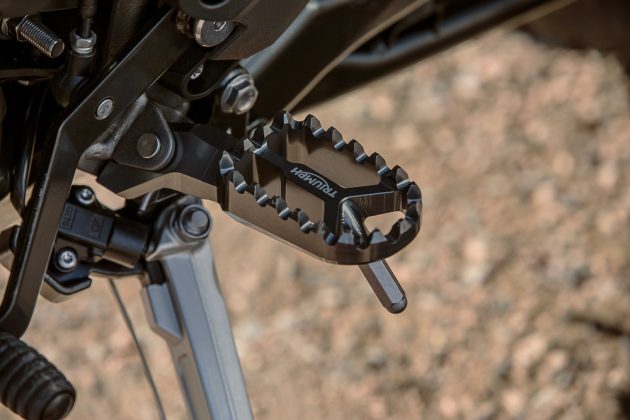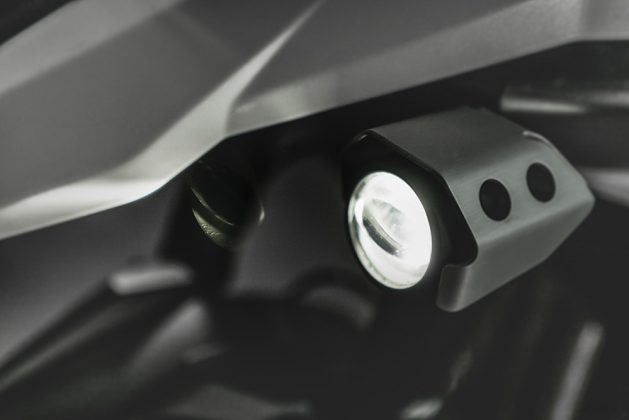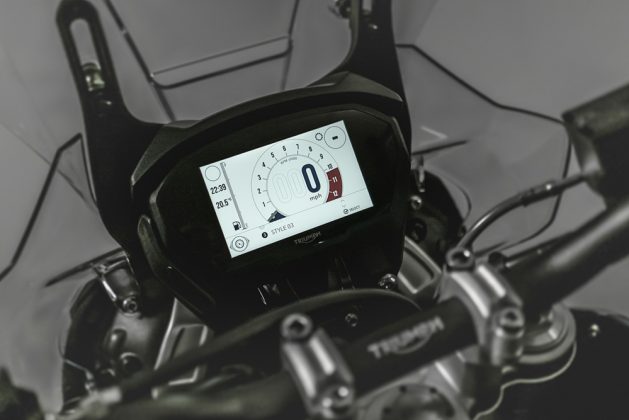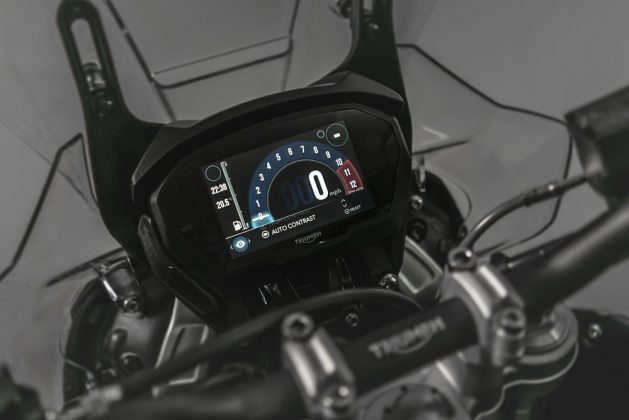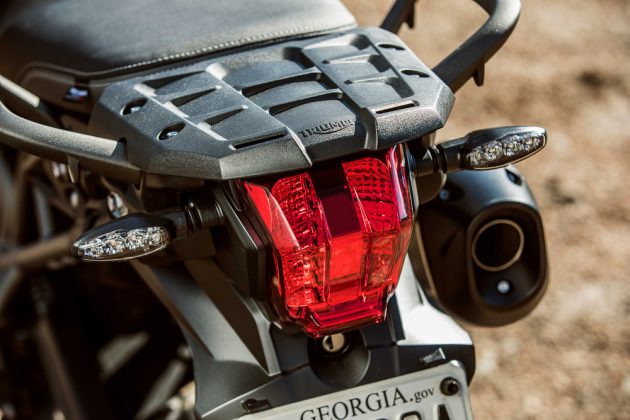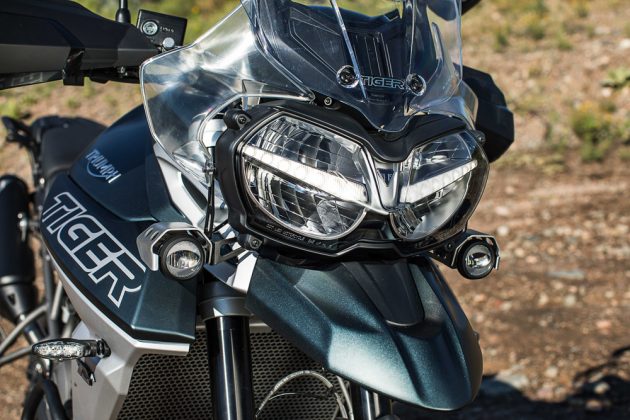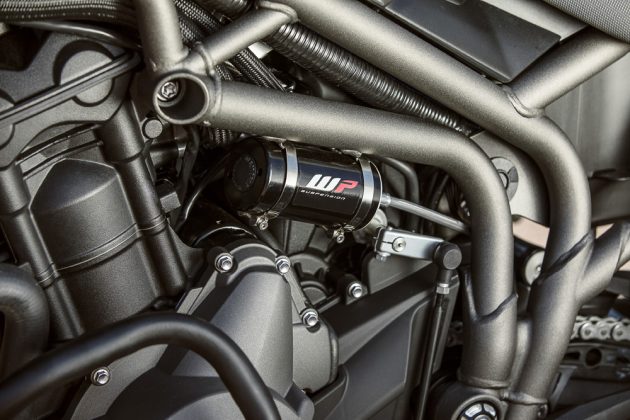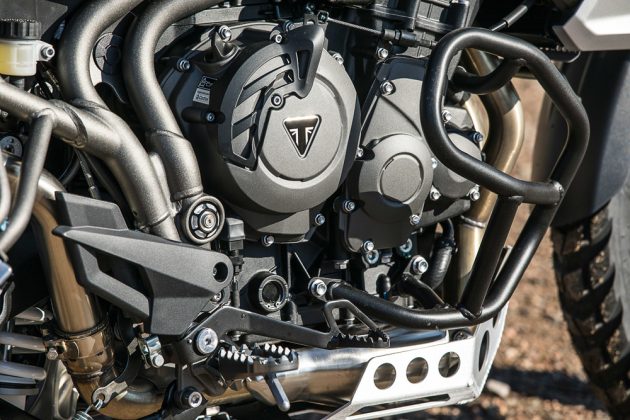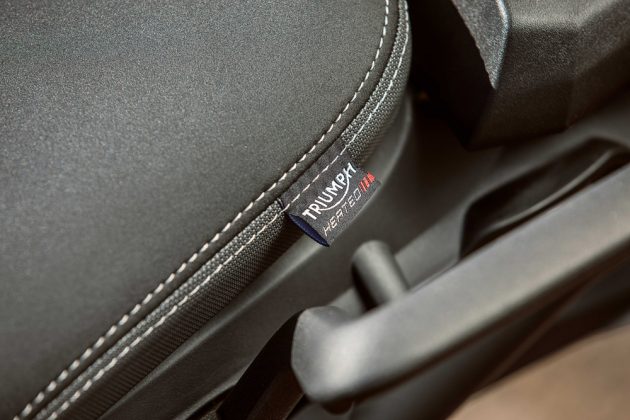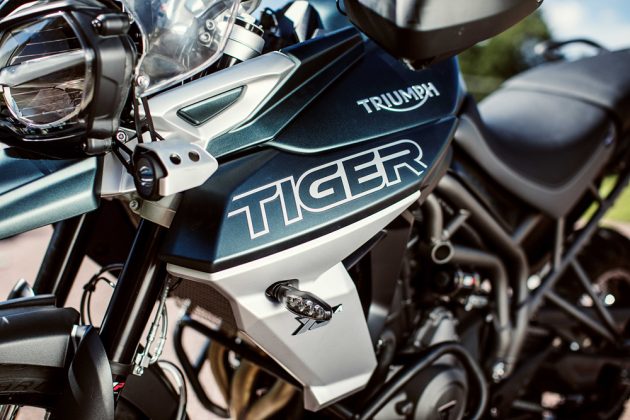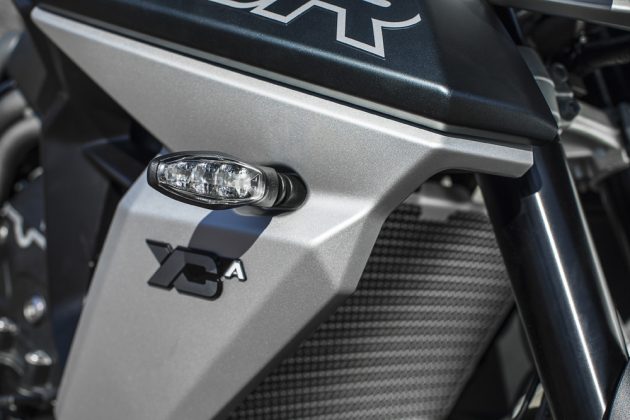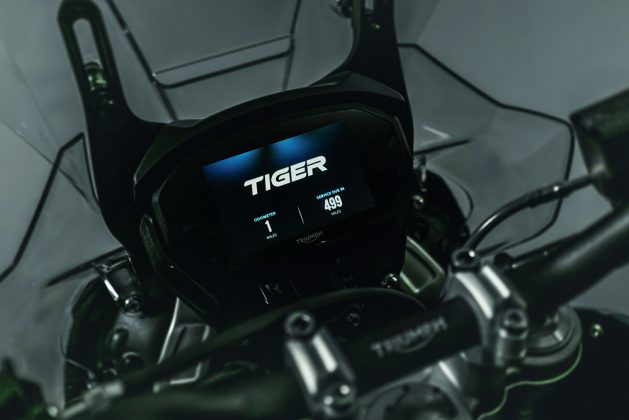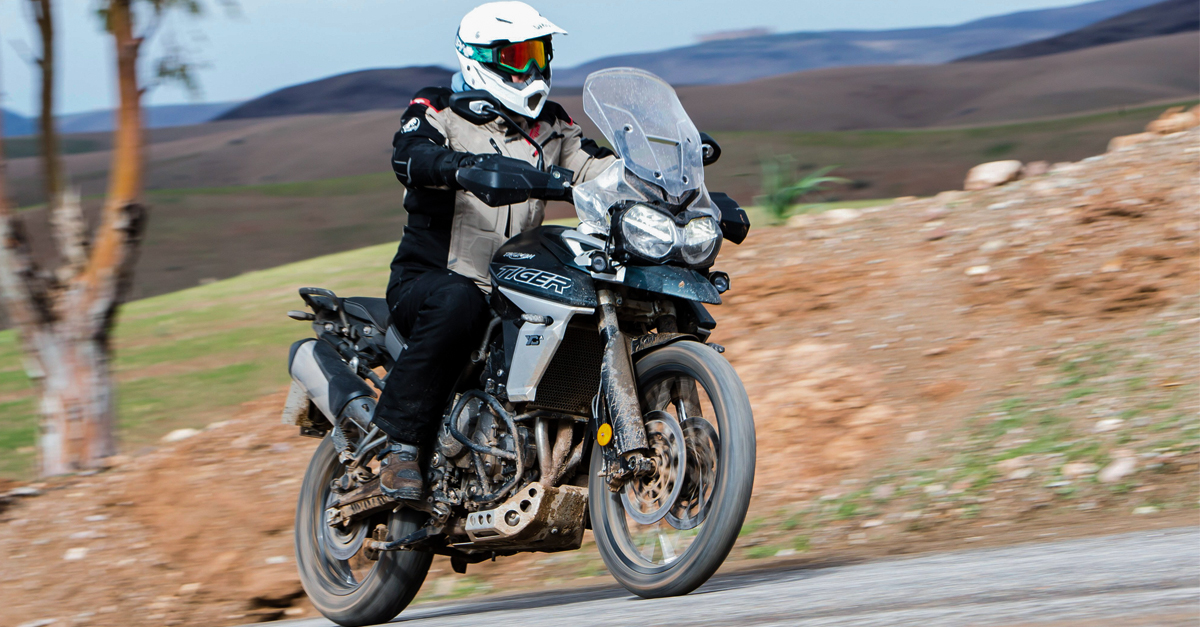 Morocco. Winter. Snowy Atlas mountain foothills, a fleet of brand new 2018 Triumph Tiger 800 XCa’s, some tents in which to sleep, everything is just fine, as we were promised a genuine adventure experience – except it has been raining a lot.
Morocco. Winter. Snowy Atlas mountain foothills, a fleet of brand new 2018 Triumph Tiger 800 XCa’s, some tents in which to sleep, everything is just fine, as we were promised a genuine adventure experience – except it has been raining a lot.
But, hey, this rain is also a blessing, because the roads around here are in poor condition and with the bad weather, they have become seriously rutted.
 When there is a combination of gravel, potholes, dodging goats, and water on the road, now that is just perfect to test a proper dual sport bike. Touring bikes start to feel so heavy and agile naked machines behave awkwardly, the dual sport doesn’t give a s**t, and the happy biker continues his trip, smiling under his helmet.
When there is a combination of gravel, potholes, dodging goats, and water on the road, now that is just perfect to test a proper dual sport bike. Touring bikes start to feel so heavy and agile naked machines behave awkwardly, the dual sport doesn’t give a s**t, and the happy biker continues his trip, smiling under his helmet.
In one word: we had the perfect conditions to test the new Tiger 800 XCa. As a reminder: the Tiger 800 was launched in 2010, revamped in 2014 and now here is the new one. Since the original launch, 68000 units have been sold worldwide. No small success, indeed.
The perfect six
Triumph has been listening to all its customers, different uses, and budget constraints. So, instead of one machine, we have to welcome six of them. They are classified in two environments: XR (R = road) has 4 versions, the basic XR, the mid-spec XRx (including a low seat – 760/780 mm – instead of the normal 810/830 mm) and the luxury XRt. Certainly more suitable for the South African conditions are the XC (C = cross) recognizable with their 21 inches spoked front wheel, with the entry-level XCx and the full spec XCa (the one that we had the chance to test during two days in Morocco, on road and off-road).
How do you recognize the difference?
It’s easy: it’s a mix of technology and premium features, such as new paint schemes, graphics and finishes. Techno-wise, the Tiger 800 features new LED headlights.
 A brand new 5 inch TFT colour instrument display with up to 12 different screens, illuminated backlit switchgear and a 5-position joystick control, as well as up to 6 riding modes for the high-spec versions. The XCa and XRt also feature cruise control, as well as heated handgrips and seat, including for the pillion… First class comfort, indeed.
A brand new 5 inch TFT colour instrument display with up to 12 different screens, illuminated backlit switchgear and a 5-position joystick control, as well as up to 6 riding modes for the high-spec versions. The XCa and XRt also feature cruise control, as well as heated handgrips and seat, including for the pillion… First class comfort, indeed.
 Lower first gear
Lower first gear
In the engine compartment, changes have been rather minor. The in-line three cylinder still delivers 95 hp @ 9500 rpm (which makes the Tiger 800 a direct competitor of bigger capacity engines, such as the BMW F 850 GS and Honda 1000 Africa Twin which deliver exactly the same level of power) and 79 Nm @ 8050 rpm. The ride-by-wire throttle has been upgraded. The exhaust is new, the exhaust note is now deeper, now closer to a Street Triple – a sweeter sound indeed.
 The torque curve is nearly as flat as Table Mountain: from 2500 to 9000 rpm, there is always more than 70 Nm of torque. That translates into a rather linear, yet always-consistent engine. On the poorly surfaced Morocco B-roads, it did not really matter to exit a corner in 3rd or 4th gear, as the traction is strong and the throttle response just felt perfect. Unlike its bigger sibling the Tiger 1200, the 800 does not offer an quick shifter, even in the top-spec versions; same applies with the Arrow exhaust.
The torque curve is nearly as flat as Table Mountain: from 2500 to 9000 rpm, there is always more than 70 Nm of torque. That translates into a rather linear, yet always-consistent engine. On the poorly surfaced Morocco B-roads, it did not really matter to exit a corner in 3rd or 4th gear, as the traction is strong and the throttle response just felt perfect. Unlike its bigger sibling the Tiger 1200, the 800 does not offer an quick shifter, even in the top-spec versions; same applies with the Arrow exhaust.
 The main technical change resides in the gearbox, with a first gear ratio lowered by 12%. Triumph wanted to enhance the Tiger’s off-road abilities, as well as giving more oomph when accelerating in first gear.
The main technical change resides in the gearbox, with a first gear ratio lowered by 12%. Triumph wanted to enhance the Tiger’s off-road abilities, as well as giving more oomph when accelerating in first gear.
A great all-rounder affordable dual sport bike
We had the chance to have a long off-road session with the Atlas mountain as the main horizon, and what was instantly noticeable was the bike’s perfect sense of balance. Unlike the 1200, the Tiger 800 is far less intimidating and requires less riding ability to take it off-road. XC’s have a 840/860 mm seat height, and as the bike still manages to feel reasonably compact and narrow, its size won’t be an issue for mainstream riders.
 For off-road use, I’d love to see the handlebars a bit higher and the rear-brake pedal a bit lower: nothing major, just a centimetre or two. Besides that, the off-road session was an absolute joy, thanks firstly to the smooth engine response combined with perfect fuelling.
For off-road use, I’d love to see the handlebars a bit higher and the rear-brake pedal a bit lower: nothing major, just a centimetre or two. Besides that, the off-road session was an absolute joy, thanks firstly to the smooth engine response combined with perfect fuelling.
The surface was quite muddy in places and it was easy to climb hills with perfect traction (fitted with Pirelli Scorpion Rally tyres), at low speed, the shorter first gear was helpful as the clutch was never required.
 There is an extra riding mode on the XCa: Off-Road Pro, which disconnects all safety aids. The traction control is free, as well as the ABS; it’s still possible to get into the menu and activate a bit of ABS on the front wheel for safety issues, though.
There is an extra riding mode on the XCa: Off-Road Pro, which disconnects all safety aids. The traction control is free, as well as the ABS; it’s still possible to get into the menu and activate a bit of ABS on the front wheel for safety issues, though.
On the way back to the tented camp (a great idea by Triumph, to give us a proper adventure feel, instead of accommodating us in the usual five star hotel!), the Tiger 800 demonstrated another aspect of its personality.
 The XCa is also a great mile-eater. The 5-position adjustable windscreen offers proper wind protection, the heated grips are efficient (with an outside temp of 5°C, the 1 out of 3 setting was sufficient) and the engine provides effortless cruising (5800 rpm at 130 km/h in 6th, with a 10500 rpm red line). On board computer values tend to reveal a rather frugal motorcycle, with an average of 4,7 l/100 after our road test, and 5,65 l/100 during the off-road session. The 19 litres fuel tank will then provide a proper range.
The XCa is also a great mile-eater. The 5-position adjustable windscreen offers proper wind protection, the heated grips are efficient (with an outside temp of 5°C, the 1 out of 3 setting was sufficient) and the engine provides effortless cruising (5800 rpm at 130 km/h in 6th, with a 10500 rpm red line). On board computer values tend to reveal a rather frugal motorcycle, with an average of 4,7 l/100 after our road test, and 5,65 l/100 during the off-road session. The 19 litres fuel tank will then provide a proper range.
 On the rather frantic b-roads, the Tiger’s agility was also a great asset. One downside was the brakes: the Brembo callipers do the job, but with no particular finesse in terms of feeling.
On the rather frantic b-roads, the Tiger’s agility was also a great asset. One downside was the brakes: the Brembo callipers do the job, but with no particular finesse in terms of feeling.
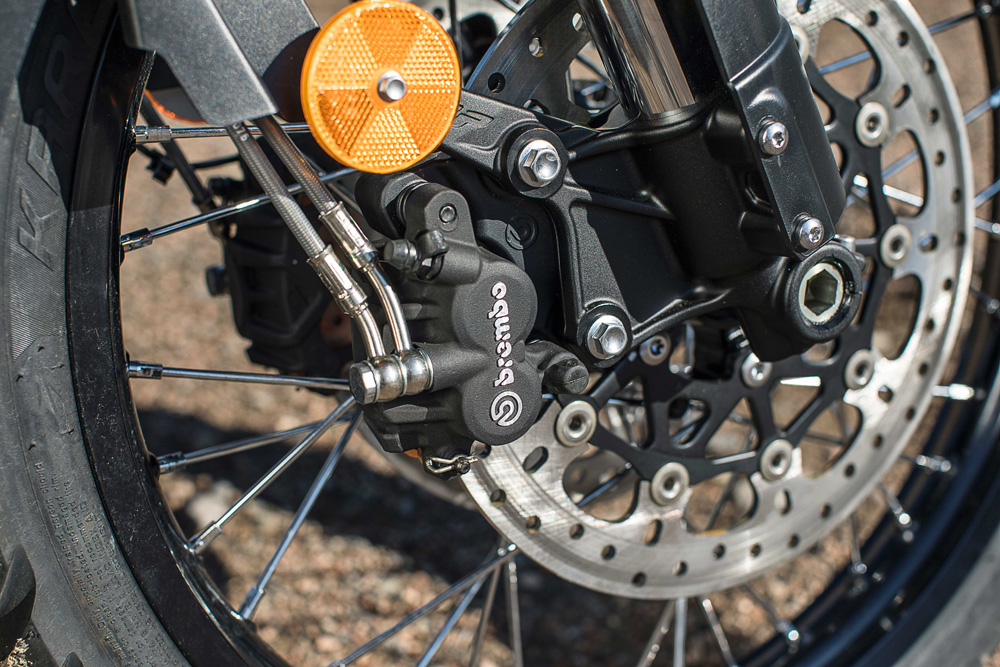 The Tiger 800 XCa scores in every department: it’s a perfect commuter, a proper long-distance tourer and has some really decent off-road abilities. On top of that, it’s surely the most high-tech bike in its class, with comfort and safety features which will be quite hard to match. Add the charm and the sound of a great in-line three engine, and you’ll get a combo that is hard to beat.
The Tiger 800 XCa scores in every department: it’s a perfect commuter, a proper long-distance tourer and has some really decent off-road abilities. On top of that, it’s surely the most high-tech bike in its class, with comfort and safety features which will be quite hard to match. Add the charm and the sound of a great in-line three engine, and you’ll get a combo that is hard to beat.






